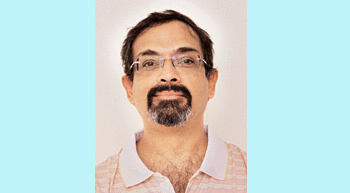Conventional sewage treatment systems, favoured by engineers and bureaucrats, are incapable of doing the job.
So the smart cities have been picked and the hunt is on to flesh out what the proclamations of the Ministry of Urban Development mean on the ground. A perusal of the ministry´s website indicates vague features like better governance, but little about infrastructure such as roads, power, water and sewage. Schools and medical facilities are left to the imagination. If a city is to be smart, it must be people-friendly, not developer-friendly. It must have amenities within walking or cycling distance and a vision to preserve these for posterity, not have them fall victim to the greed of land sharks.
Unfortunately, the Smart Cities website has little to indicate how issues surrounding water, waste-water and sewage will be tackled. There is some mention of providing sanitation, including solid waste management. Toilets without treatment only defer the problem of sewage; they do not solve it. Therefore in the ideal situation, smart cities will have a range of solutions to collect, treat and recycle or reuse sewage (septage, waste water and faecal sludge are included in this). Under the Swacch Bharat Mission (Urban), the focus is on building toilets. Little attention is being given so far to what will happen with the sewage or faecal sludge generated.
Failure to do so will magnify current problems of water pollution and groundwater depletion. Pollution of lakes, rivers and aquifers are reaching crisis proportions. The Central Pollution Control Board´s (CPCB) data now shows about 75 per cent of all surface water in the country is unfit for human use without treatment. In some cases, this involves tertiary treatmentû reverse osmosis or similar- to become fit for drinking. Several cities in Punjab are testimony to this. Agra has a tertiary treatment plant to process Yamuna water for drinking as it is too polluted downstream from Delhi that conventional treatment plants fail to cope. This is the result of poor sanitation planning. SBM (U) presents an opportunity to rectify past wrongs.
Conventional sewage treatment systems, favoured by engineers and bureaucrats, are incapable of doing the job. Even in an advanced country like Japan, a third of the population lives ´off-grid´; their sewage is treated through non-conventional means in what are called decentralised water treatment systems. Augmenting Delhi´s conventional sewage treatment network to collect and treat all its sewage will cost an estimated INR 26,000 crore based on the current population. By the time it is completed, if ever, the population would have expanded necessitating further investments. India does not have the money, manpower or electricity to build, operate and maintain conventional sewage systems. Therefore, a mix of conventional and non-conventional systems can deal with the sewage likely to be generated if SBM (U) achieves its goal of eliminating open defecation.
Non-conventional systems offer a way out where land is available but people and power are not. They mostly use natural processes to treat sewage and the effluent quality is as good as that from conventional sewage treatment plants. Non-conventional systems are of three basic types:
1.Bacteria or enzyme based. Here a concentrated inoculum of bacteria is introduced into waste water along with aeration to accelerate decomposition of organic matter. Alternatively, enzymes produced by the bacteria can be used. A constant dose based on the volume and characteristics of the waste water is required. This is suitable for treating water in running channels or lakes and ponds. Little power may be needed for aeration.
2.Constructed wetlands. These are large troughs inlaid with stones and gravel of varying sizes and planted with local vegetation that thrives in water. The vegetation draws out the organic matter from the water while the stones and gravel trap any floating pollutants. They can be mechanically cleaned. Little power is needed to lift water from the sources into the treatment bed. No water is visible on the surface and therefore, mosquitoes cannot breed. The wetland does not smell. An area of about 1.5 sq m is needed to treat 1000 litres of water per day.
3.Soil bio-technology. In this system, especially cultured earthworms mixed with soil are used to ingest and process all organic matter in the water. Water trickles through the soil beds and the earthworms eat the organic load. They produce humus that needs to be harvested periodically. The surface is dry and can be planted with local plants to make the place look like a garden rather than a sewage treatment plant. This needs little power to lift water into the treatment zone.
All three systems can be installed where land is available. Maintenance costs are much lower than conventional sewage systems. For example, the third option uses 0.03 kilowatts per cu. m. while the most basic conventional sewage treatment system uses 0.5 kW (for an activate sludge STP).
The other maintenance it needs is periodic trimming of the plants and aeration of the treatment beds, both of which can be done manually, generating low skilled employment. A modern STP may need just one person to operate and its employment generation potential is minimal.
The suggestion, therefore, for smart cities is to seriously consider bringing non-conventional sewage systems onto the table. Before that can happen, smart cities need to give as much if not higher priority to sewage treatment and reuse that they give to water supply. They must focus on collecting, treating and reusing the sewage of all urbanites as envisaged under SBM (U). Unless sewage is accounted for, water supply sources will remain under threat and these smart cities will be incapable of handling their waste.
The author is Nitya Jacob, a research and policy advocacy professional. He heads the policy advocacy and research wing at WaterAid India.



Leave a Reply
You must be logged in to post a comment.